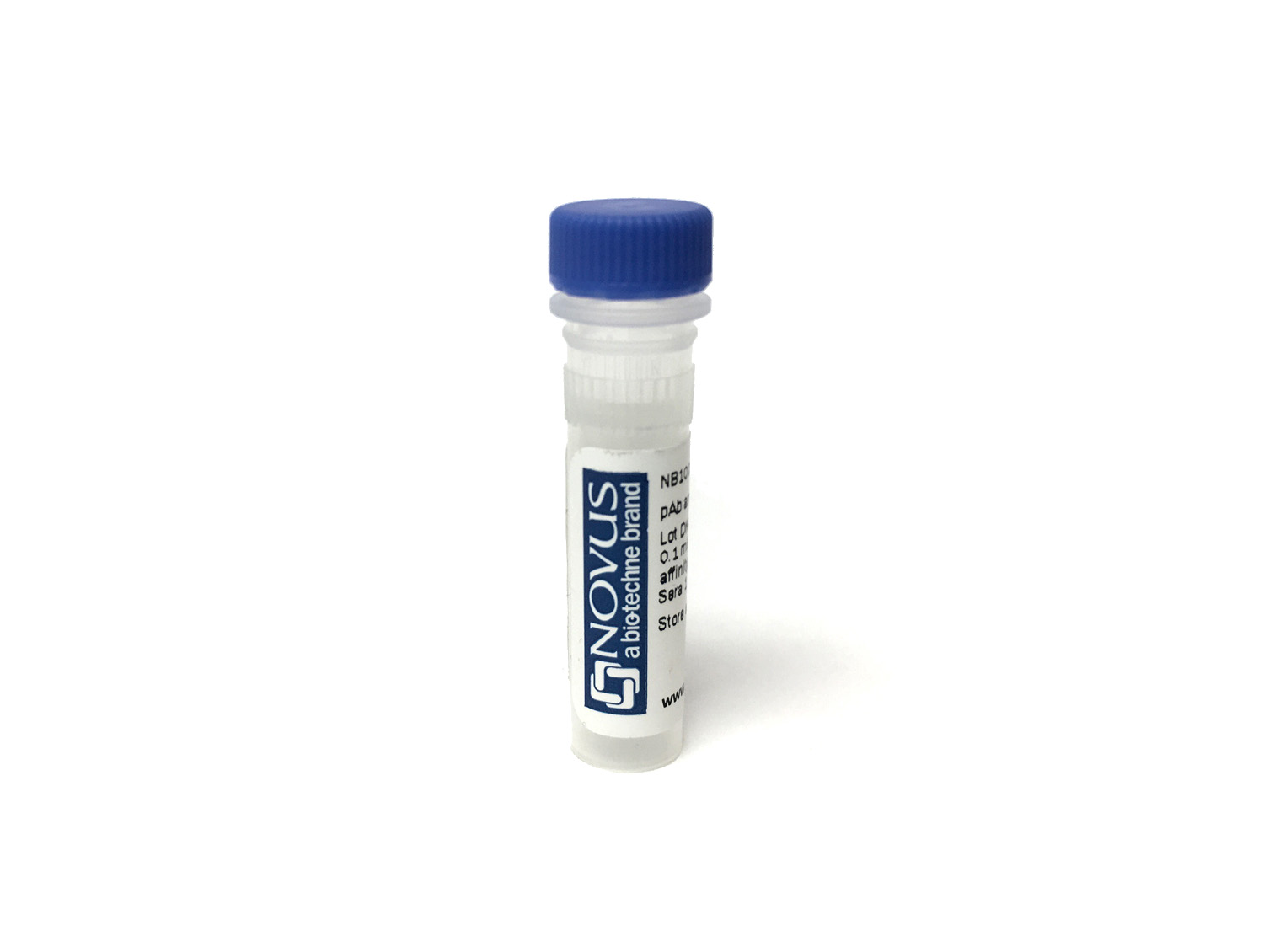ATG5 Antibody (ATG5/2553) [DyLight 488]
Novus Biologicals, part of Bio-Techne | Catalog # NBP3-08434G


Conjugate
Catalog #
Forumulation
Catalog #
Key Product Details
Species Reactivity
Human
Applications
Immunohistochemistry-Paraffin, Western Blot, ELISA
Label
DyLight 488 (Excitation = 493 nm, Emission = 518 nm)
Antibody Source
Monoclonal Mouse IgG1 kappa Clone # ATG5/2553
Concentration
Please see the vial label for concentration. If unlisted please contact technical services.
Product Specifications
Immunogen
Recombinant fragment of human ATG5 protein (around aa 1-119) (exact sequence is proprietary) (Uniprot: Q9H1Y0)
Localization
Cytoplasmic
Marker
Autophagy Marker
Clonality
Monoclonal
Host
Mouse
Isotype
IgG1 kappa
Applications for ATG5 Antibody (ATG5/2553) [DyLight 488]
Application
Recommended Usage
ELISA
Optimal dilutions of this antibody should be experimentally determined.
Immunohistochemistry-Paraffin
Optimal dilutions of this antibody should be experimentally determined.
Western Blot
Optimal dilutions of this antibody should be experimentally determined.
Application Notes
Optimal dilution of this antibody should be experimentally determined.
Formulation, Preparation, and Storage
Purification
Protein A or G purified
Formulation
50mM Sodium Borate
Preservative
0.05% Sodium Azide
Concentration
Please see the vial label for concentration. If unlisted please contact technical services.
Shipping
The product is shipped with polar packs. Upon receipt, store it immediately at the temperature recommended below.
Stability & Storage
Store at 4C in the dark.
Background: ATG5
In the context of its role in autophagy, Atg5 plays diverse physiologically relevant roles. For example, Atg5 together with Atg7 are required for adipogenesis (3). Recently, Atg5 has been implicated in the process of B-cell receptor polarization and antigen presentation (4). In addition to its role in autophagy, Atg5 is implicated in apoptotic cell death. Interaction of Atg5 with FADD (Fas-associated protein with death domain) is involved in cell death induced by IFN-gamma. A truncated form of Atg5, a 24kDa fragment, leads to cell death by interacting with Bcl-xl and inhibiting its anti-apoptotic activity (5). Other Atg5 interacting partners include interleukin-beta (IL-beta) converting enzyme and nucleotide binding oligomerization domain protein 1, which suggest that Atg5 may play other biologically relevant roles (3).
References
1. Yang, Z., & Klionsky, D. J. (2010). Mammalian autophagy: Core molecular machinery and signaling regulation. Current Opinion in Cell Biology. https://doi.org/10.1016/j.ceb.2009.11.014
2. Rubinsztein, D. C., Shpilka, T., & Elazar, Z. (2012). Mechanisms of autophagosome biogenesis. Current Biology. https://doi.org/10.1016/j.cub.2011.11.034
3. Subramani, S., & Malhotra, V. (2013). Non-autophagic roles of autophagy-related proteins. EMBO Reports. https://doi.org/10.1038/embor.2012.220
4. Arbogast, F., Arnold, J., Hammann, P., Kuhn, L., Chicher, J., Murera, D., Gros, F. (2019). ATG5 is required for B cell polarization and presentation of particulate antigens. Autophagy. https://doi.org/10.1080/15548627.2018.1516327
5. Luo, S., & Rubinsztein, D. C. (2007). Atg5 and Bcl-2 provide novel insights into the interplay between apoptosis and autophagy. Cell Death and Differentiation. https://doi.org/10.1038/sj.cdd.4402149
Long Name
ATG5 Autophagy Related 5 Homolog
Alternate Names
APG5, ASP
Gene Symbol
ATG5
Additional ATG5 Products
Product Documents for ATG5 Antibody (ATG5/2553) [DyLight 488]
Product Specific Notices for ATG5 Antibody (ATG5/2553) [DyLight 488]
DyLight (R) is a trademark of Thermo Fisher Scientific Inc. and its subsidiaries.
This product is for research use only and is not approved for use in humans or in clinical diagnosis. Primary Antibodies are guaranteed for 1 year from date of receipt.
